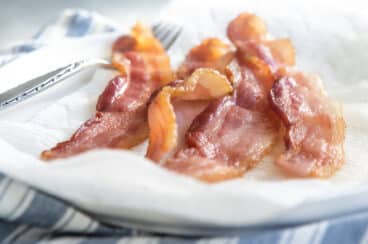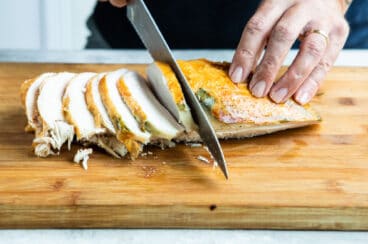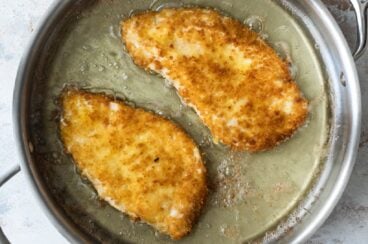This post may contain affiliate links. For more information, please see our affiliate policy.
Beef tenderloin recipes are ideal for holiday menus or Sunday dinners. But before you even preheat the oven, study up on How to Tie a Beef Tenderloin so the meat cooks evenly.
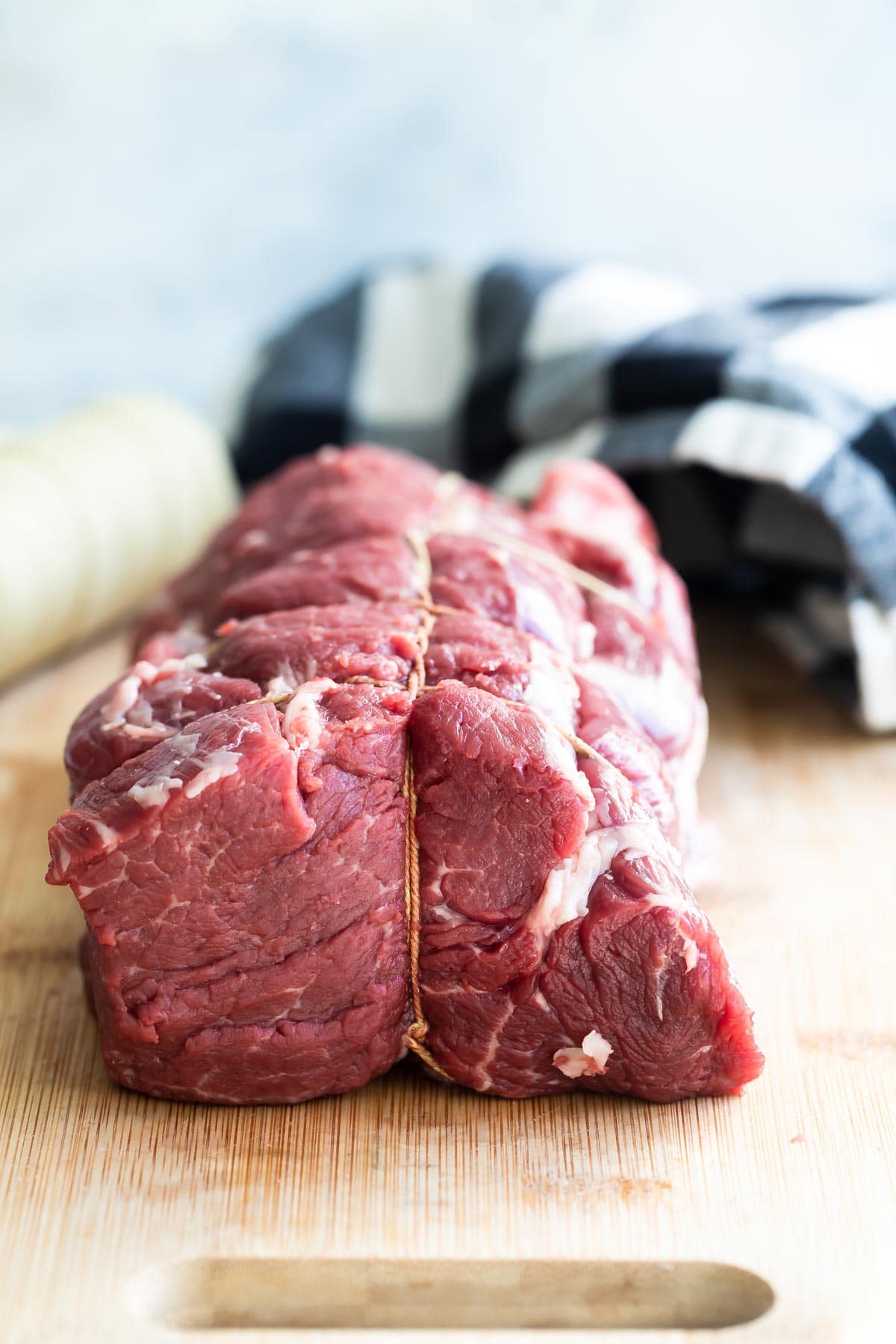
For Christmas dinner, Easter brunch, or any Sunday dinner you wish to make feel more like a holiday, turn to Roast Beef Tenderloin. But no matter how you season or slice it, it’s important to learn how to tie a whole beef tenderloin.
Tying the whole tenderloin not only keeps the meat about even from edge to edge, which allows for even cooking time, but also limits the amount the meat spreads while cooking. Translation: Your roast beef will be beautifully uniform in shape as well as succulent and juicy if you follow these steps for how to tie beef tenderloin before roasting.
Table of Contents
Equipment and ingredient notes
- Kitchen twine: My top pick is any butcher’s twine made from cotton. Linen twine is a close runner-up, and if you don’t have access to either of those, unflavored dental floss can work in a pinch.
- Beef tenderloin: My Roast Beef Tenderloin recipe calls for a 2-pound portion, but feel free to use this method for how to tie beef tenderloin with whatever meat serving matches your crowd size. Look for center-cut beef tenderloin, also known as Châteaubriand. This cut of meat has a thick layer of fat that needs to be removed before roasting.
Step-by-step instructions
To trim the beef tenderloin:
- On one end of the roast, slide the blade of your knife between the meat and the shiny connective tissue (silverskin).
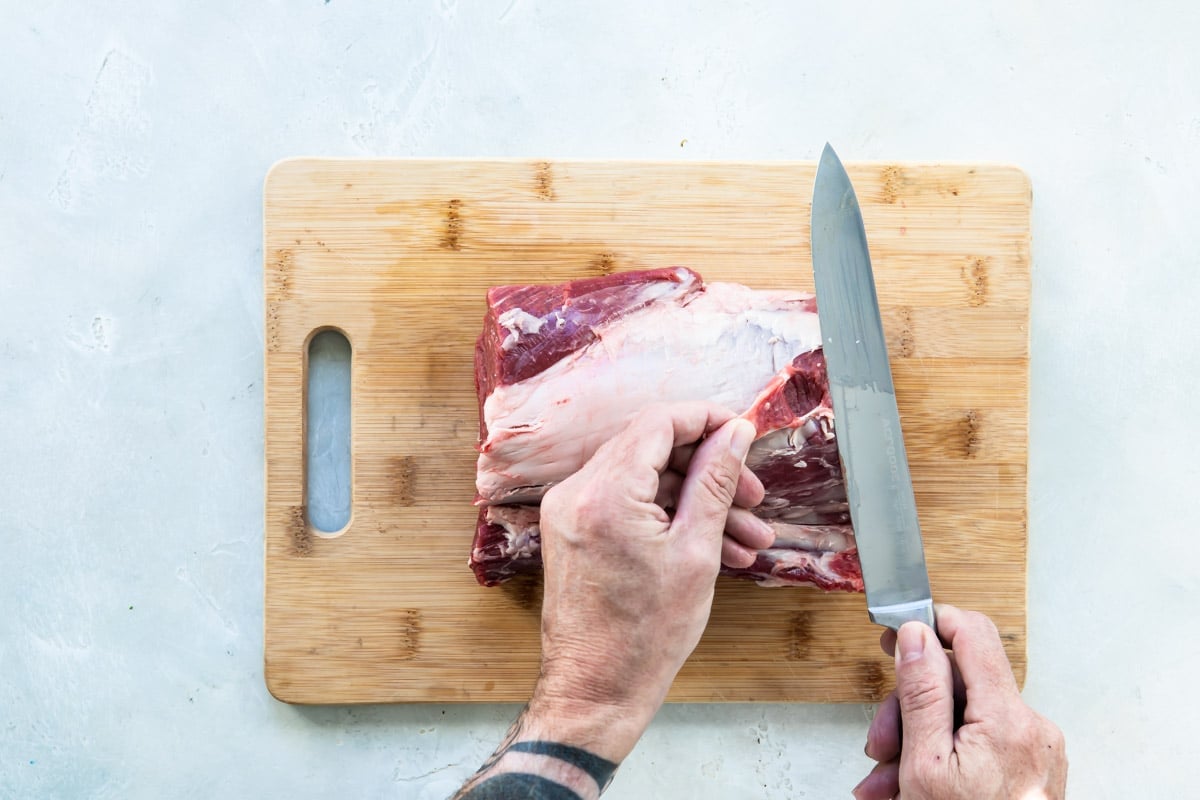
- Immediately begin to pull the connective tissue back away from the meat as you continue to cut between the two until you’ve reached the other side of the roast.
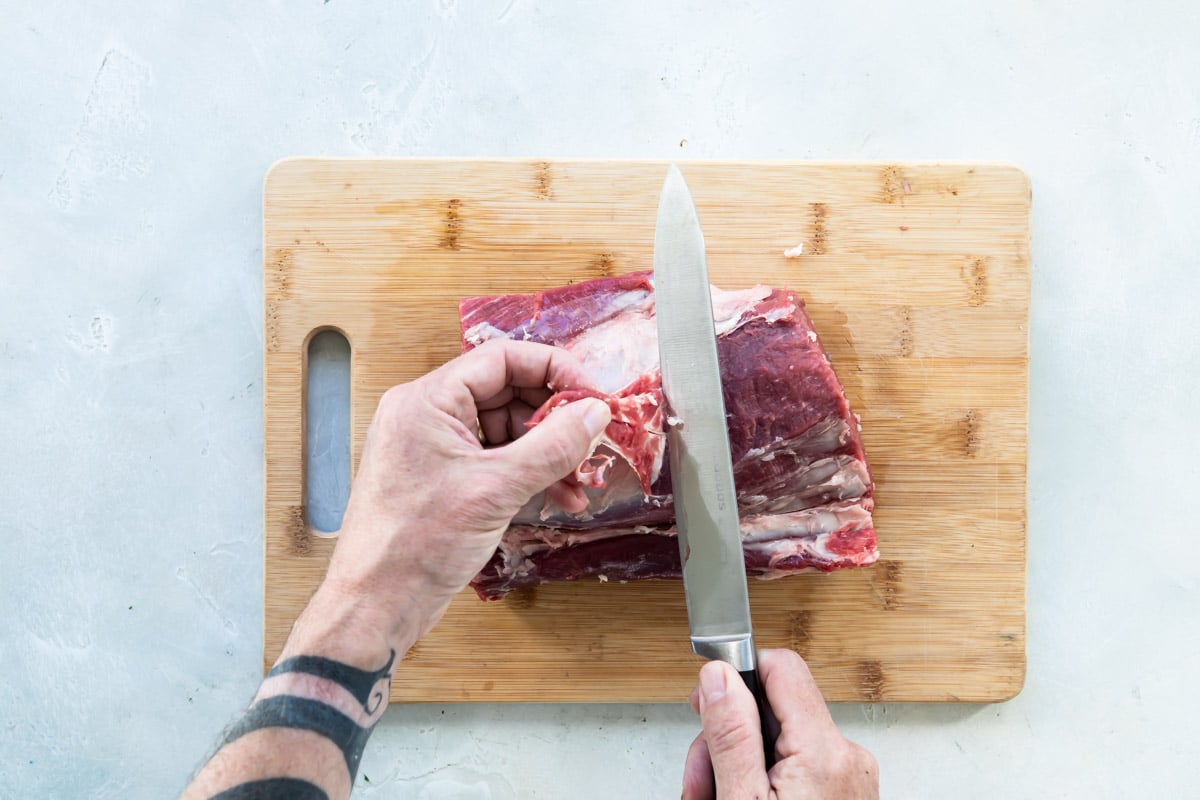
- Work in strips if necessary and repeat as needed.
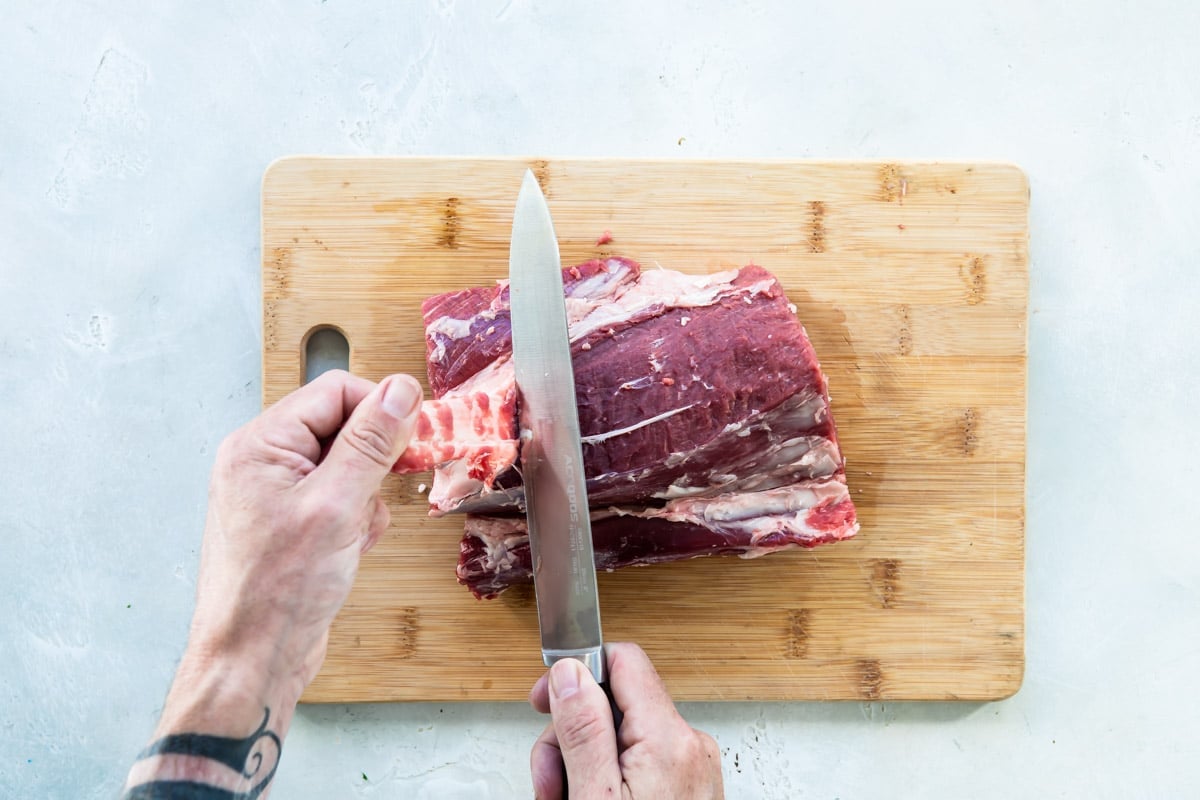
To tie the beef:
- Using 12-inch lengths of kitchen twine, tie a loose knot around one end of the meat and pull until snug to make an anchor knot.
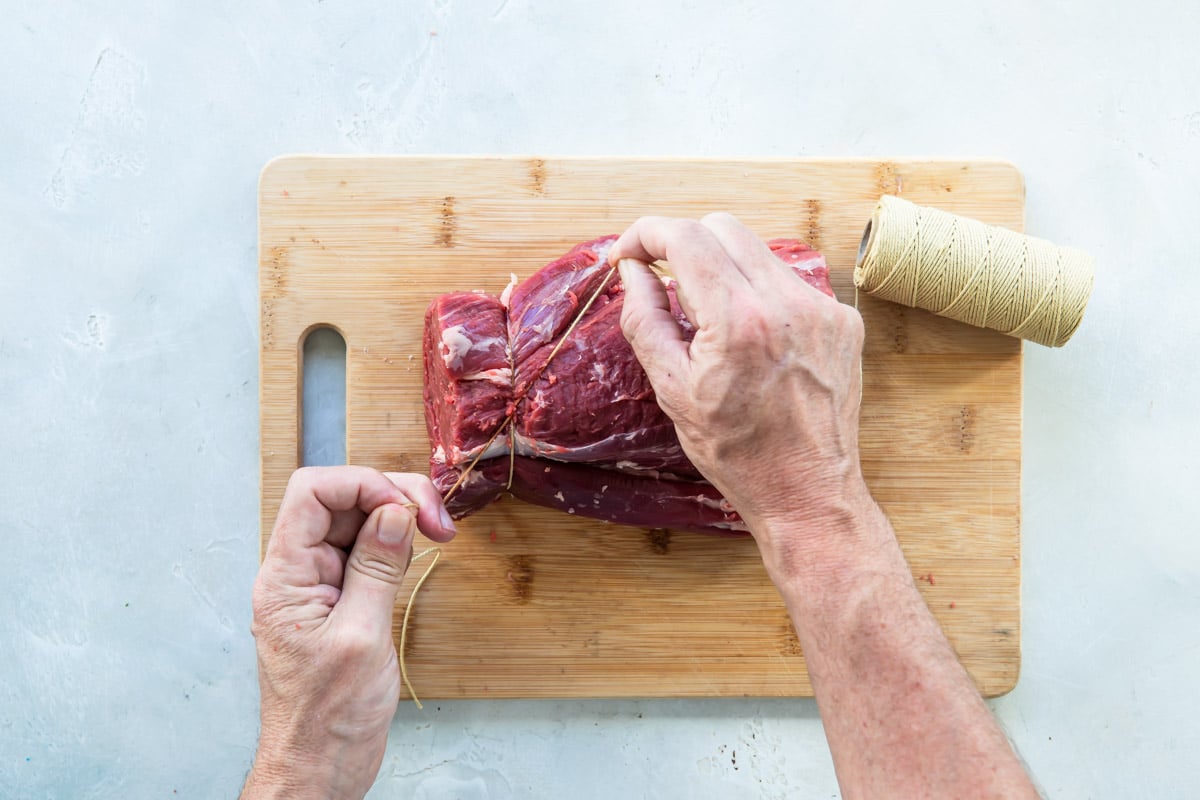
- Pull a length of twine away from the anchor to create a large loop.
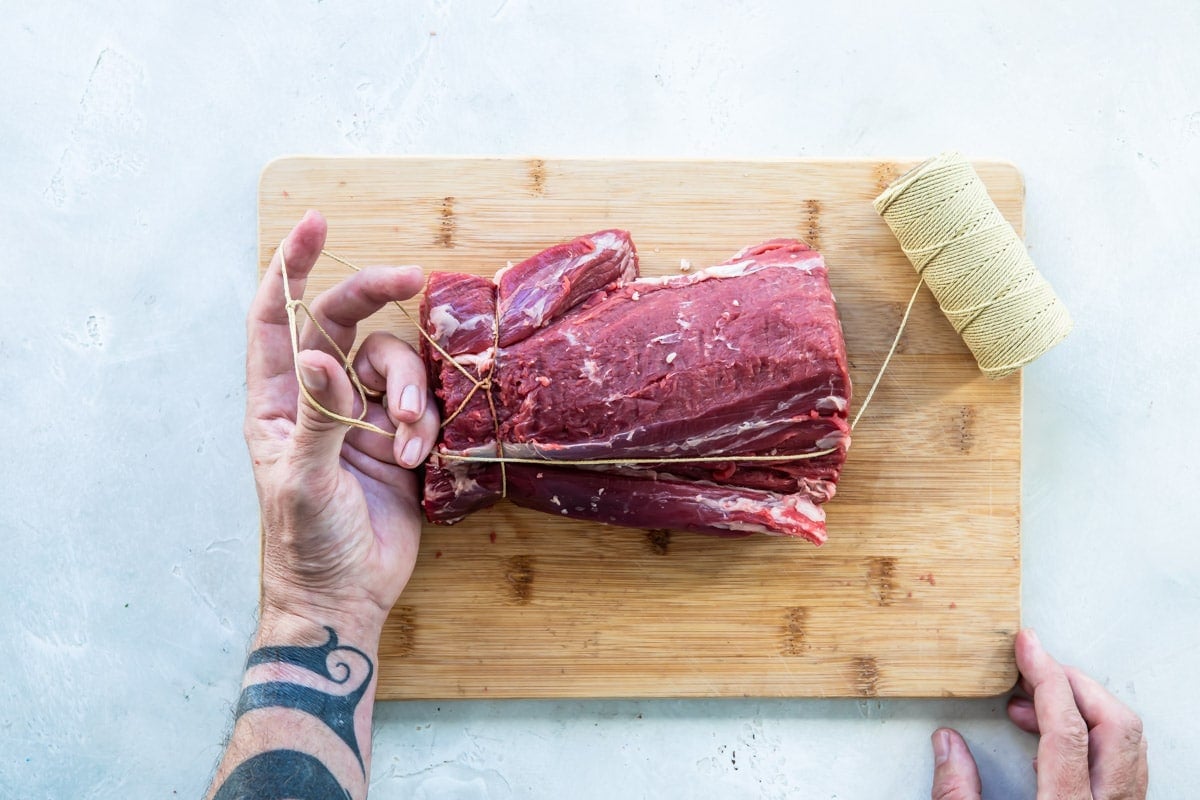
- Loop it around the tenderloin.
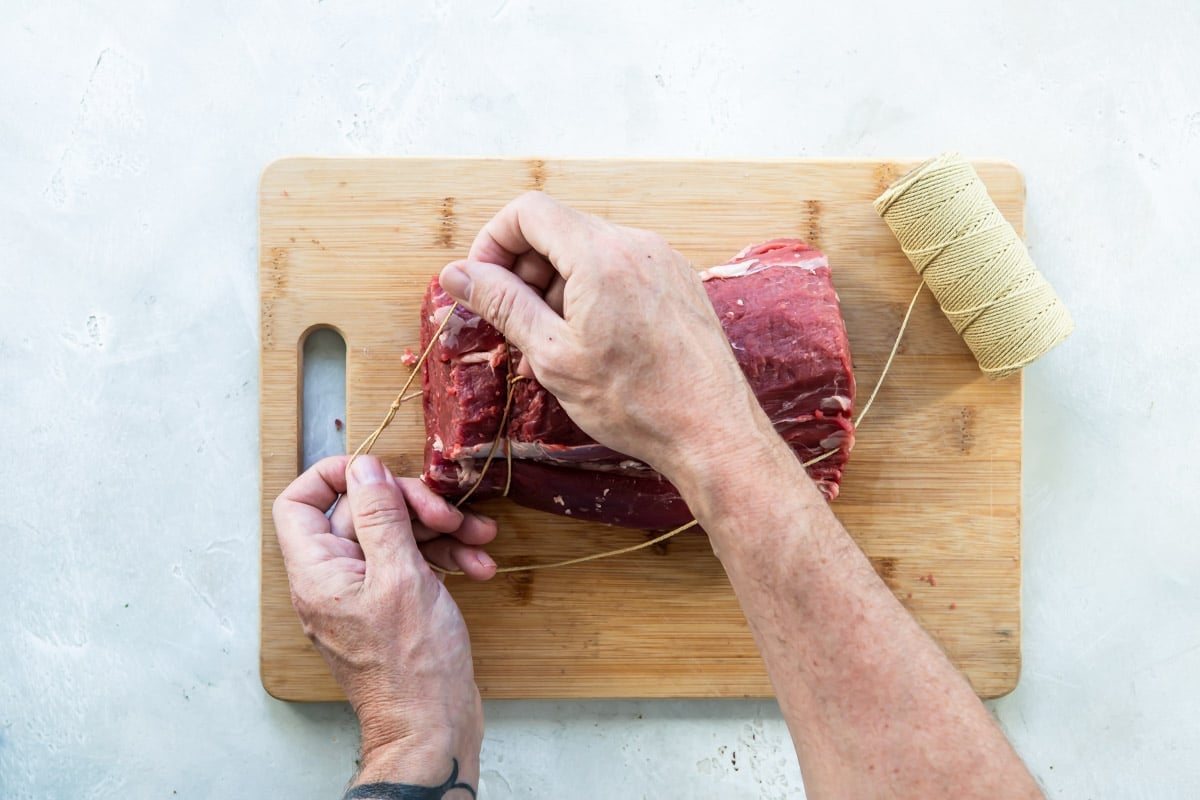
- Space it about 1 ½ inches from the anchor knot and tie a second knot.
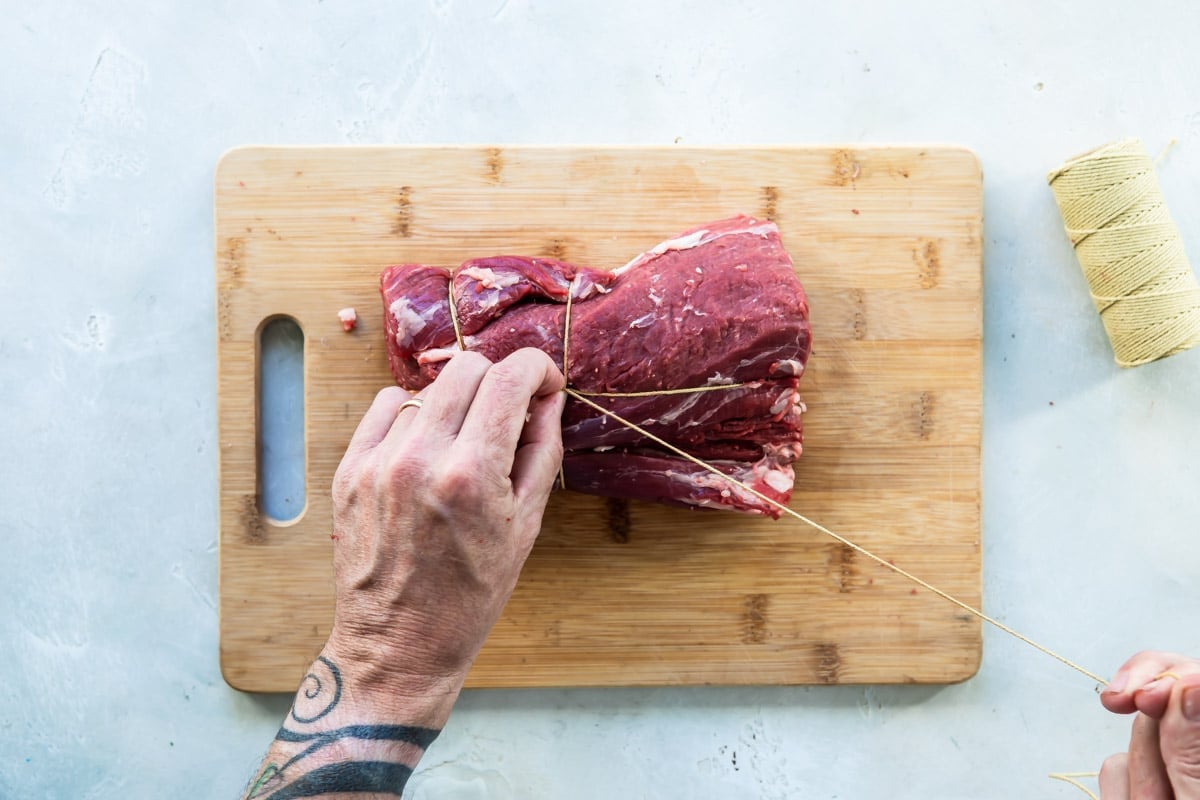
- Pull more twine to create a third loop and secure it 1 ½ inches from the second knot.
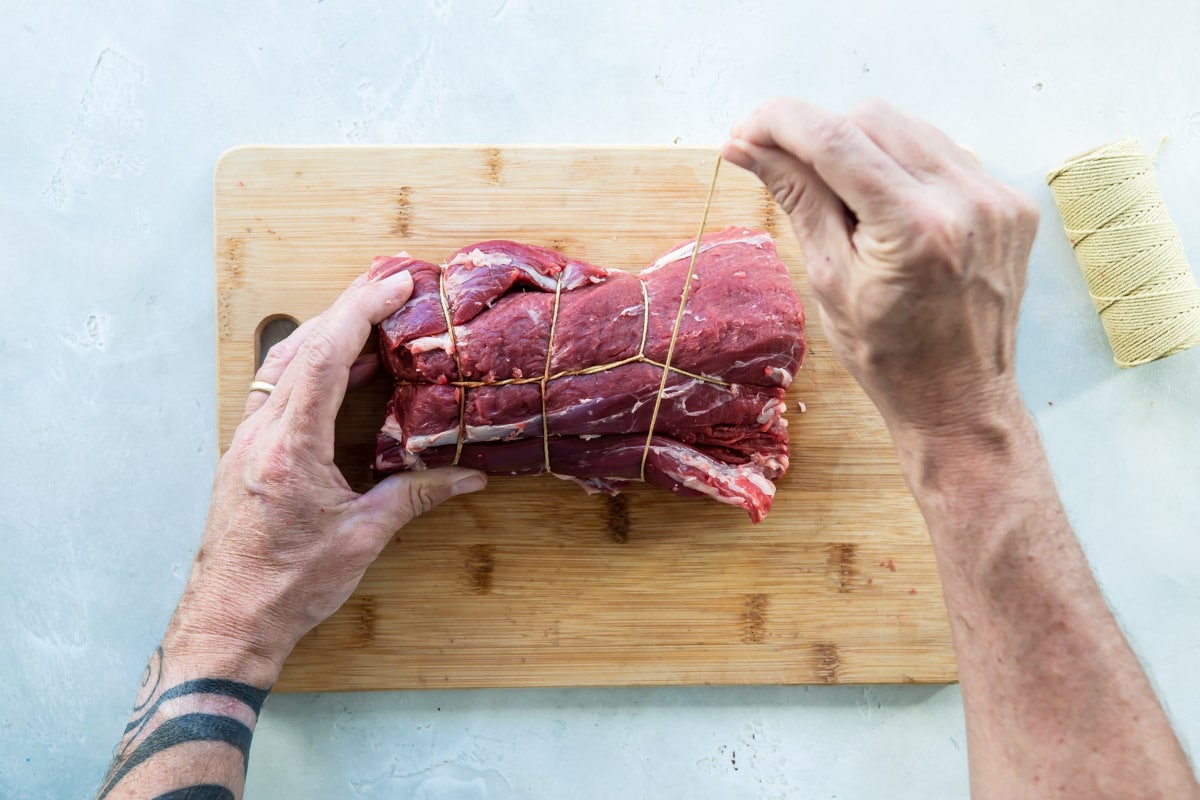
- Continue tying the roast crosswise at 1-inch intervals until the toast is evenly tied. Sprinkle tied roast with salt, cover loosely with plastic wrap, and let stand at room temperature for 1 hour.
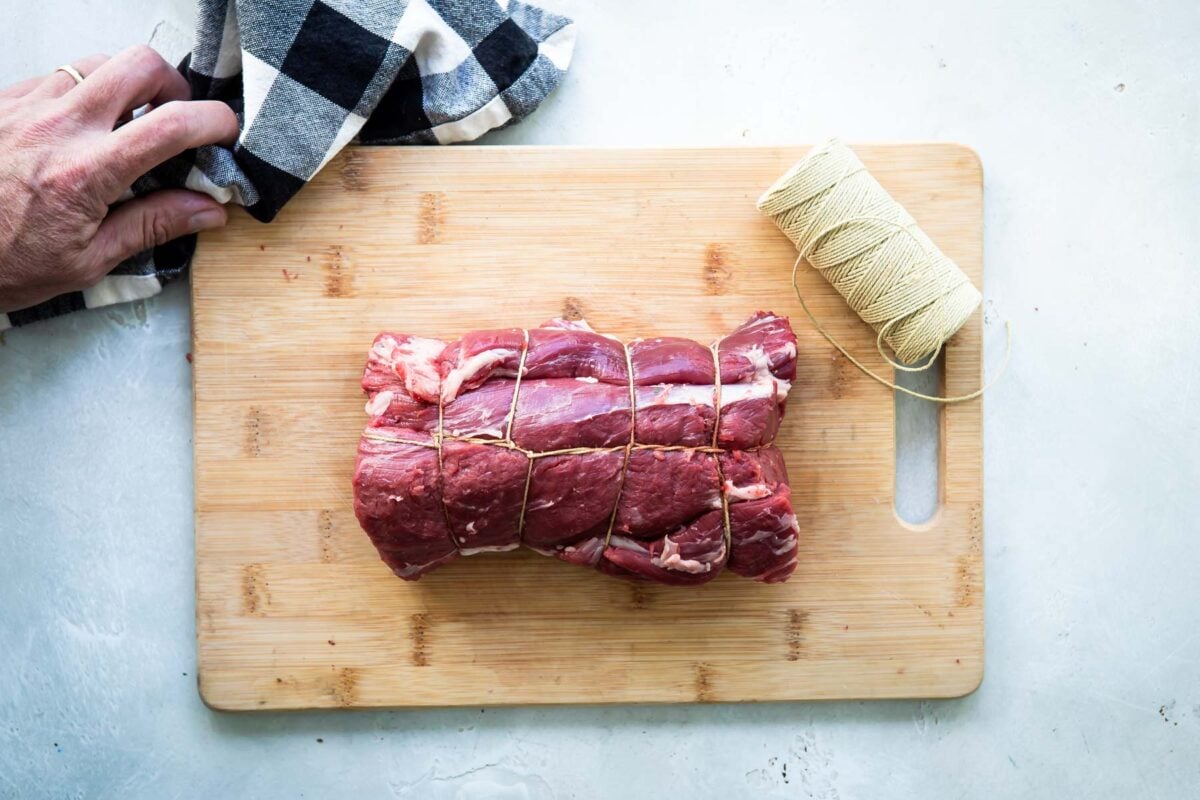
To roast the beef:
- Adjust an oven rack to the middle position and preheat oven to 300 degrees. Set a wire rack over a rimmed baking sheet (line the baking sheet with foil for easier cleanup). Pat roast dry with paper towels, then sprinkle evenly with pepper. Transfer roast to prepared rack or roasting pan.
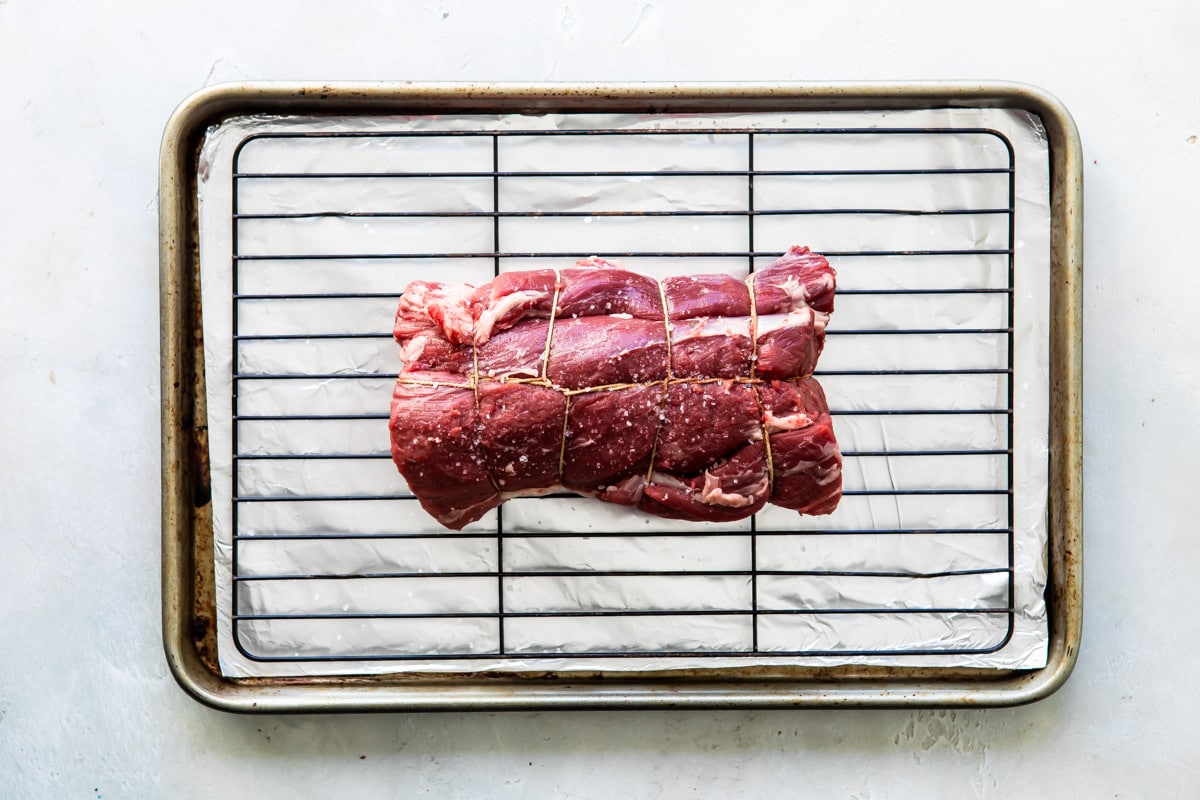
- Rub the roast with butter or olive oil. Roast until beef registers 125 degrees (for medium-rare), 40 to 55 minutes or 135 degrees (for medium), 1 hour to 1 hour and 10 minutes. Juices should run clear when tested with a probe thermometer. Flip the roast halfway through cooking.
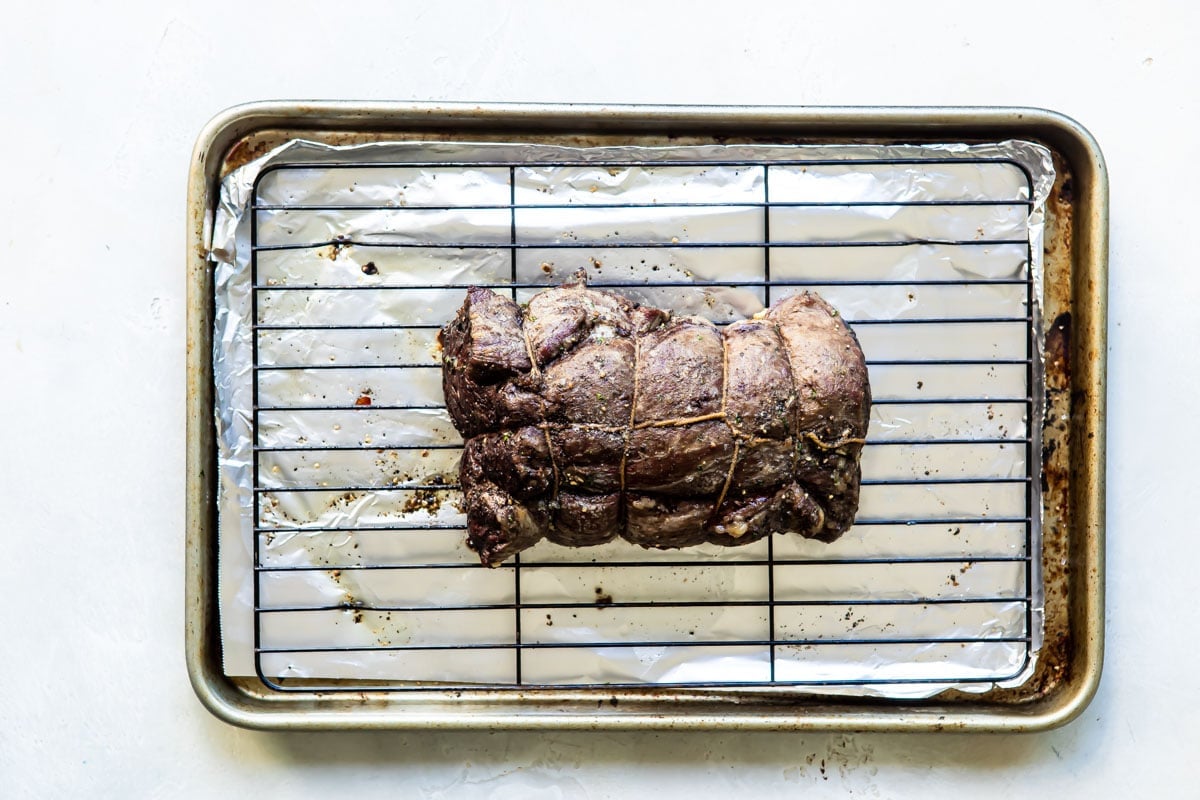
- In a large pan over medium-high heat, heat vegetable oil until just smoking. Add roast to skillet and sear until well-browned on all sides, about 2 to 4 minutes per side.
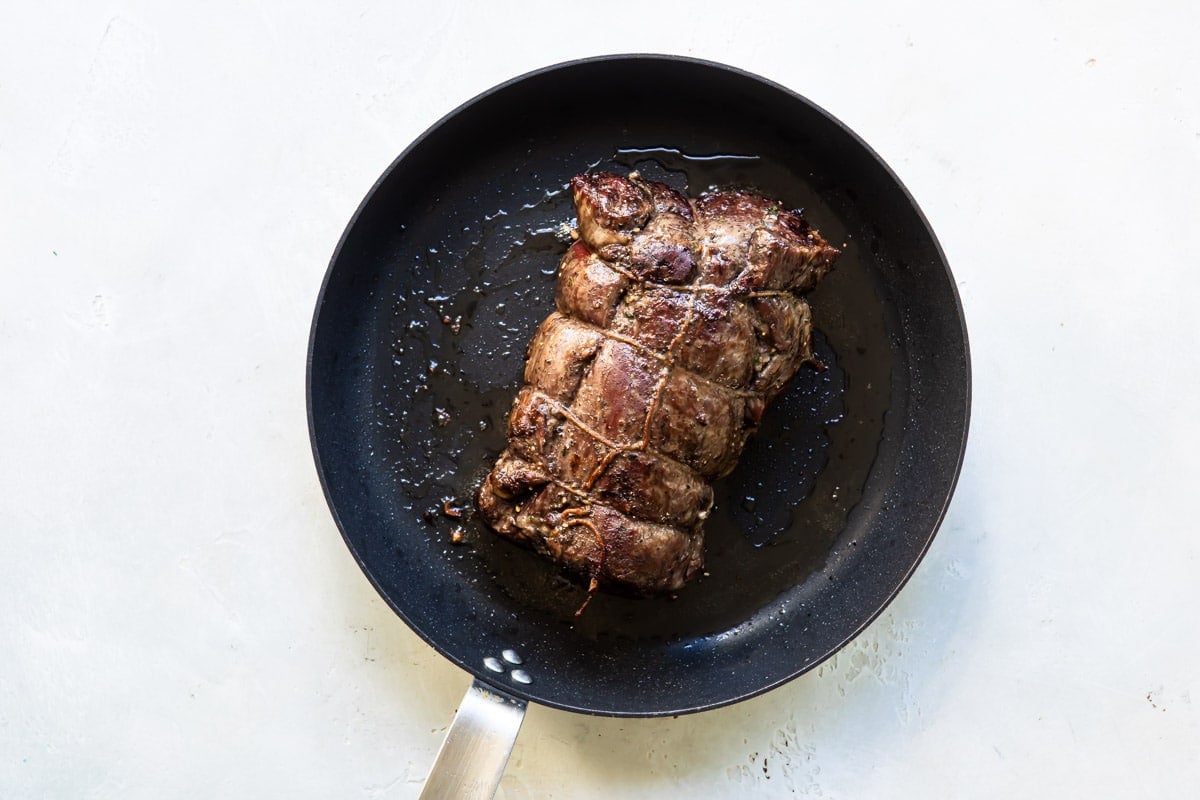
- Transfer roast to a carving board and let rest for 15 minutes. Remove twine and cut roast crosswise into 1/2-inch thick slices.
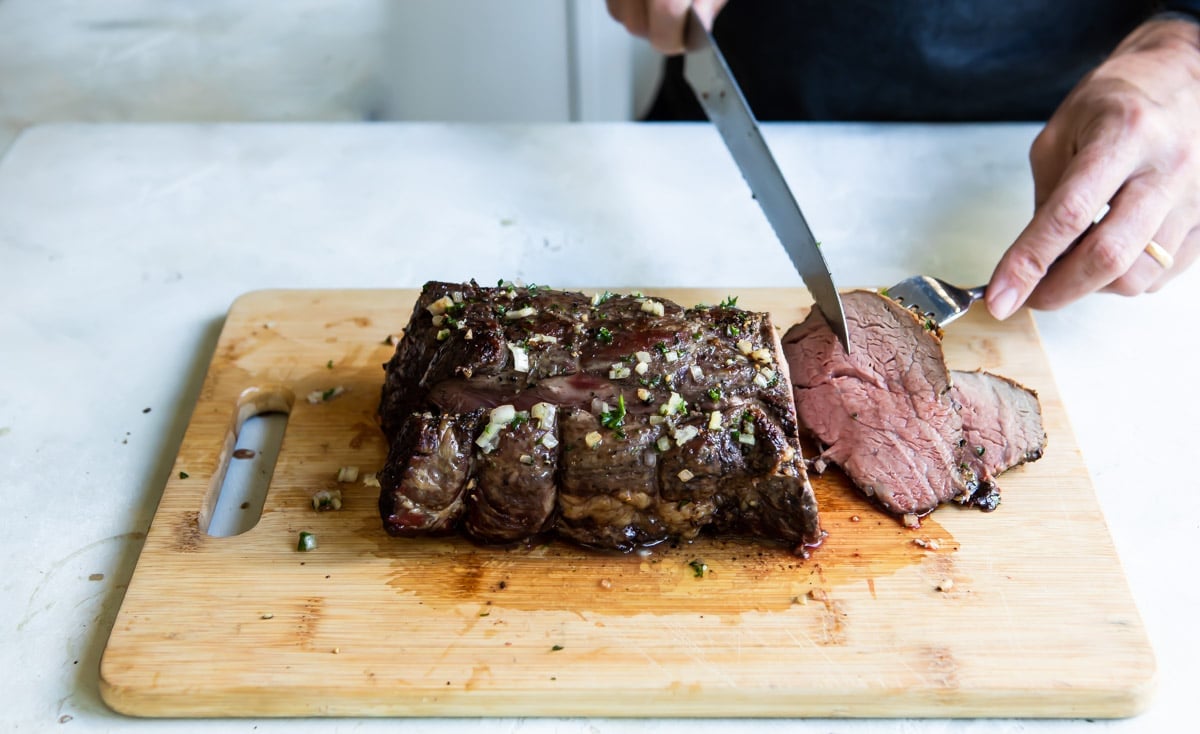
Recipe tips and variations
- Yield: This technique for tying beef tenderloin uses a 2-pound portion of beef which feeds about 6 adults, but the technique can be used for any roast.
- Prime Rib with Mustard Cream Sauce: Put your new meat-tying skills to use with a show-stopping Prime Rib. This one is served with a mustard sauce, but a creamy horseradish sauce would be delicious too.
- No-tie steaks: Looking for beef without the twine? Try Grilled New York Strip Steaks, Surf and Turf with filet mignon and lobster tails, or Grilled Tri-Tip.
- Compound butter: Add more flavor to any steak with a pat of flavorful compound butter. Just combine softened unsalted butter and your favorite aromatics and herbs like garlic, shallots, finely minced red onions, rosemary, thyme, black pepper, or kosher salt, roll into a log, chill, and slice.
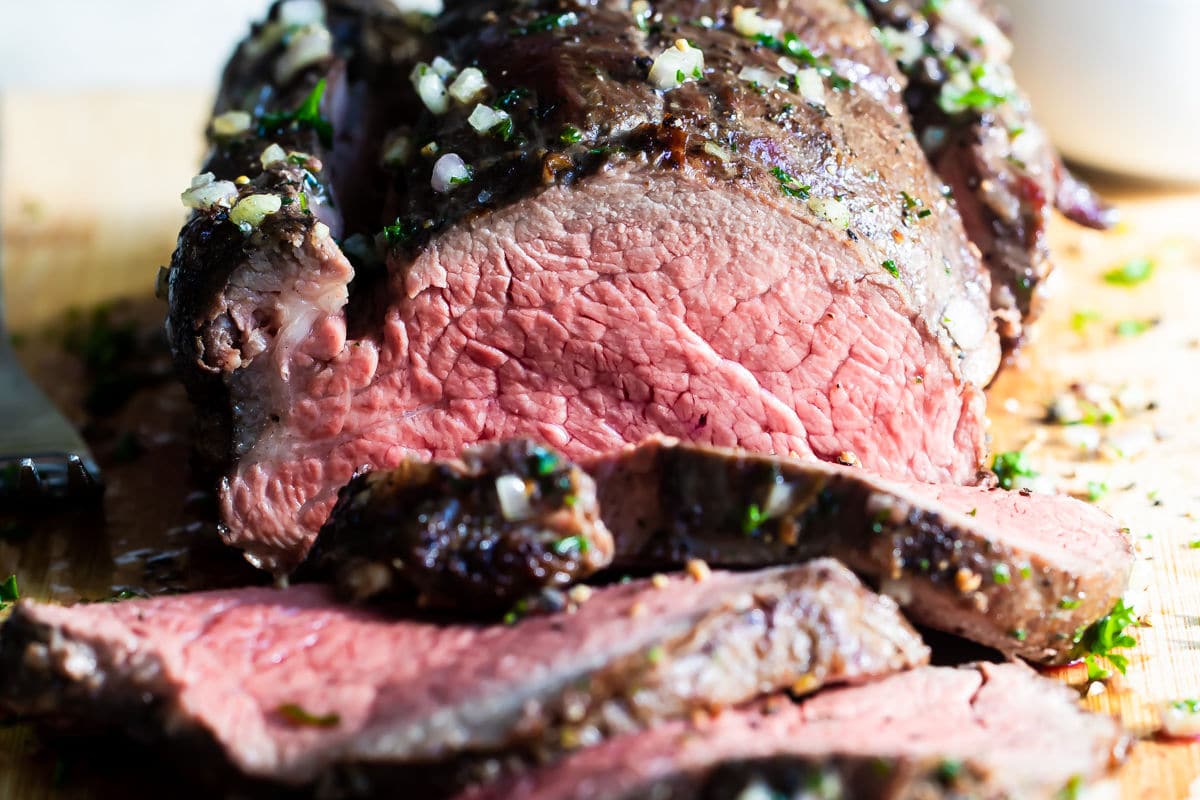
Frequently Asked Questions
Slide tip of a chef’s knife under connective tissue, keeping the knife tip close to surface of the meat. Using your other hand to pull connective tissue tight against the blade, smoothly slide the knife angled away from the meat to slice away the white portion on the top of the beef tenderloin.
Keep that kitchen twine handy. Cornish hens, chickens, turkeys, and prime rib all benefit from being tied or trussed.
I swear by my instant-read meat thermometer, and follow these temperature guidelines for any beef preparation:
Rare: 120 to 125 degrees F
Medium Rare: 130 to 135 degrees F
Medium: 140 to 145 degrees F
Medium Well: 150 degrees F
Well: 160 degrees F
While many chefs (and I) prefer a slightly lower temperature for juicer, more tender beef, the USDA has a more conservative minimum safe cooking temperature of 145 degrees F. Cook to your desired doneness level.
More kitchen techniques
Breakfast Recipes
How to Cook Bacon
Working with Meat and Fish
How to Carve a Turkey
Working with Meat and Fish
How to Bread Chicken
Join Us
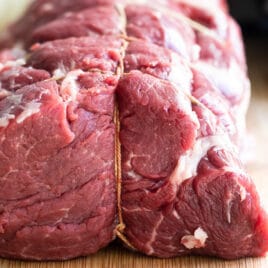
How to Tie a Beef Tenderloin
Equipment
- kitchen twine (see note 1)
Ingredients
- 1 (2-pound) center-cut beef tenderloin roast trimmed (see note 2)
Instructions
To trim the beef tenderloin:
- On one end of the roast, slide the blade of your knife between the meat and the shiny connective tissue.
- Immediately begin to pull the connective tissue back away from the meat as you continue to cut between the two until you've reached the other side of the roast. Work in strips if necessary and repeat as needed.
To tie the beef:
- Using 12-inch lengths of kitchen twine, tie a loose knot around one end of the meat and pull until snug to make an anchor knot.
- Pull a length of twine away from the anchor to create a large loop, then loop it around the tenderloin, spacing it about 1 ½ inches from the anchor knot.
- Pull more twine to create another loop and secure it 1 ½ inches from the second loop.
- Continue tying the roast crosswise at 1 1/2-inch intervals until the toast is evenly tied.
Notes
- Kitchen twine: My top pick is any butcher’s twine made from cotton. Linen twine is a close runner-up, and if you don’t have access to either of those, unflavored dental floss can work in a pinch.
- Beef tenderloin: My Roast Beef Tenderloin recipe calls for a 2-pound portion, but feel free to use this method for how to tie beef tenderloin with whatever meat serving matches your crowd size. Look for center-cut beef tenderloin, also known as Châteaubriand, which has a thick layer of fat that needs to be removed before roasting.
- Yield: This technique for tying beef tenderloin uses a 2-pound portion of beef which feeds about 6 adults, but the technique can be used for any roast.
Nutrition
Meggan Hill is a classically-trained chef and professional writer. Her meticulously-tested recipes and detailed tutorials bring confidence and success to home cooks everywhere. Meggan has been featured on NPR, HuffPost, FoxNews, LA Times, and more.
